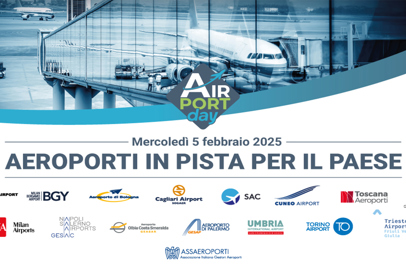16 June 2020
IATA: criteria for COVID-19 testing in the air travel process
Takeoff guidance: measures to mitigate the risk of COVID-19 transmission during air travel and the risk of importation of COVID-19 via air travel
The International Air Transport Association (IATA) released criteria for the use of COVID-19 testing in the travel process. Should governments choose to introduce COVID-19 testing for travelers arriving from countries considered as high risk, testing must deliver results fast, be able to be conducted at scale, and operate to very high rates of accuracy. Additionally, testing must be cost-effective and not create an economic or logistical barrier to travel.
The International Civil Aviation Organization (ICAO) published Takeoff guidance which is the global guidance for governments to follow in reconnecting their people and economies by air. Takeoff outlines layers of measures to mitigate the risk of COVID-19 transmission during air travel and the risk of importation of COVID-19 via air travel. COVID-19 testing should not be a necessary condition for re-opening borders or resuming air services.
Technology for rapid point-of-care Polymerized Chain Reaction (PCR) testing could be a useful layer of protection for travelers from countries considered as higher risk, potentially removing the need for more burdensome and intrusive measures such as quarantine which is a major barrier to travel and the recovery of demand.
“Airlines are committed to reducing the risks of COVID-19 transmission via air travel and COVID-19 testing could play an important role. But it must be implemented in line with ICAO’s global re-start guidance with the aim of facilitating travel. Speed, scale and accuracy are the most critical performance criteria for testing to be effectively incorporated into the travel process,” said Alexandre de Juniac, IATA’s Director General and CEO.
As part of the travel process COVID-19 testing would need to be conducted by trained public health officials and meet the following criteria:
Speed: Testing results should be delivered quickly, with results available in under an hour as the minimum standard.
Scale: If testing takes place at the airport, testing capacity of several hundreds of tests per hour must be achievable. The use of saliva for taking samples rather than nasal or throat swabs would facilitate this and would also be expected to reduce time and improve passenger acceptance.
Scale: If testing takes place at the airport, testing capacity of several hundreds of tests per hour must be achievable. The use of saliva for taking samples rather than nasal or throat swabs would facilitate this and would also be expected to reduce time and improve passenger acceptance.
Accuracy: Extremely high accuracy is essential. Both false negative and false positive results must be below 1%.
Where does testing fit in the travel process?
Ideally COVID-19 testing would be required in advance of arrival at the airport and within 24 hours of travel. Passengers arriving “ready-to-fly” reduces the risk of contagion in the airport and enables early re-accommodation for any traveler who tests positive.
If testing is required as part of the travel process, it is recommended at departure. Governments would need to mutually recognize test results and data transmission should take place directly between passengers and governments in a similar manner as e-visa clearances are currently handled. Any testing requirements should only be in place for as long as necessary. To ensure this, regular evaluations should be conducted.
Who Should Pay?
Cost is an important consideration. Testing should facilitate travel and not provide an economic barrier. With testing at some European destinations costing in excess of $200, this is a real concern. IATA supports the World Health Organization (WHO) International Health Regulations which requires governments to bear the costs of mandatory health testing. Where a test is offered on a voluntary basis, it should be charged at cost price.
What happens when someone tests positive?
Ideally testing takes place prior to travel or at the point of departure and a positive result would mean that the passenger could not travel as planned. In this case, airlines have been offering flexibility to consumers. This includes re-booking or refunds in line with the airline’s commercial policy. Many airlines are offering the same flexibility to passengers who suspect that they have symptoms consistent with COVID-19 as well as members of the same traveling party, particularly when they are members of the same household.
If testing is mandated on arrival and a passenger tests positive, then the passenger should be treated according to the requirements of the receiving State. Airlines should not be required to repatriate the passenger(s) or ‘punished’ with financial penalties such as fines or through operational penalties such as the withdrawal of the right to operate in the market.
If testing is mandated on arrival and a passenger tests positive, then the passenger should be treated according to the requirements of the receiving State. Airlines should not be required to repatriate the passenger(s) or ‘punished’ with financial penalties such as fines or through operational penalties such as the withdrawal of the right to operate in the market.
Edited by Alisè Vitri
Text source: IATA Press Office
Visual: © Sisterscom.com / Shutterstock
You might be interested in
Useful Info

Authority
Olbia Airport will be named after Prince Karim Aga Khan IV
ENAC pays tribute to the founder of modern tourism in Costa Smeralda: a key figure in the history of aviation and the development of Sardinia
Useful Info

Authority
Airport Day
The national event, organized by Assaeroporti, is held on February 5 to celebrate the strategic role of the 17 participating Italian airports
Useful Info

Authority
ENAC: reorganization and future challenges of air transport
At the 2025 Meeting, a discussion on innovation, sustainability, innovative air mobility and quality of services, in line with the country's strategic objectives


